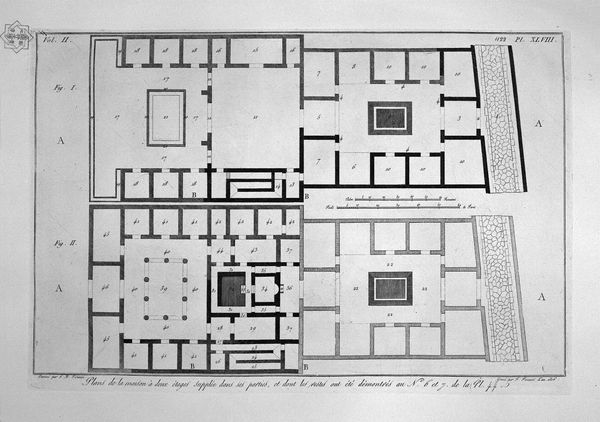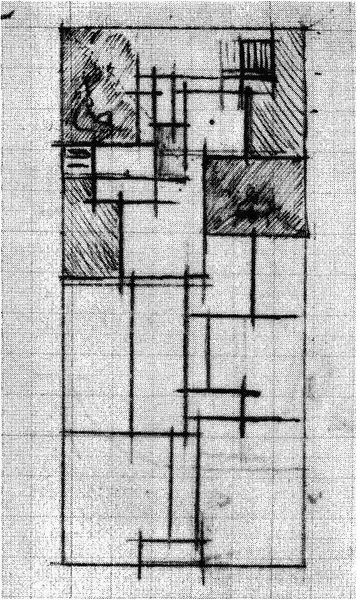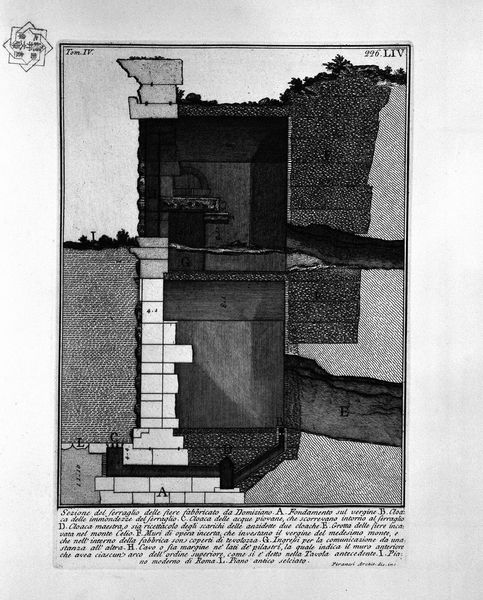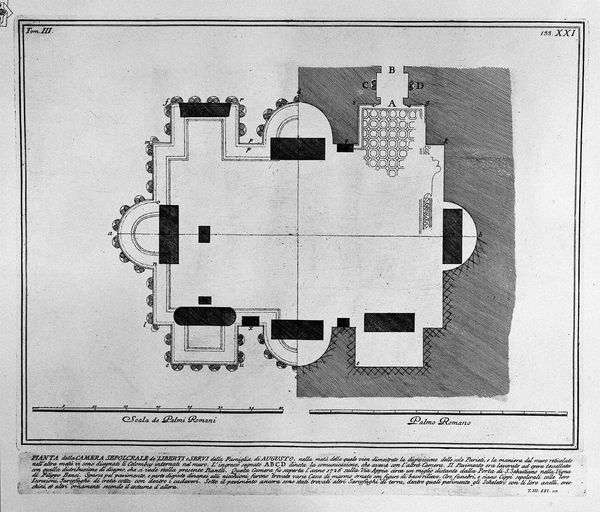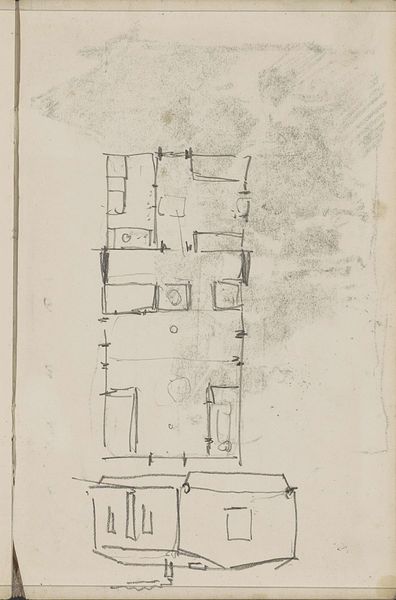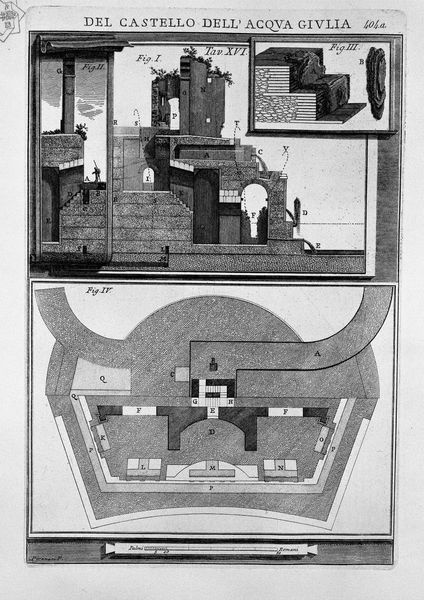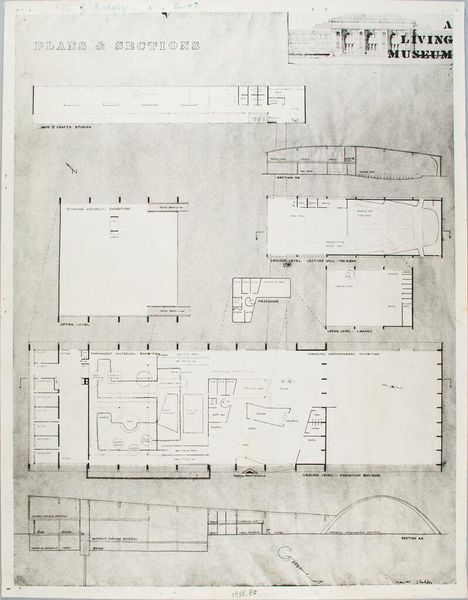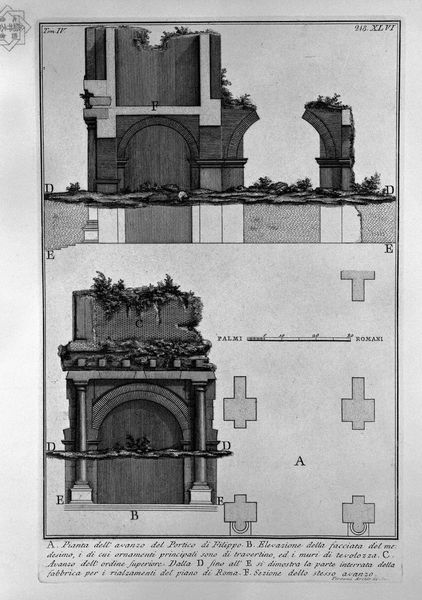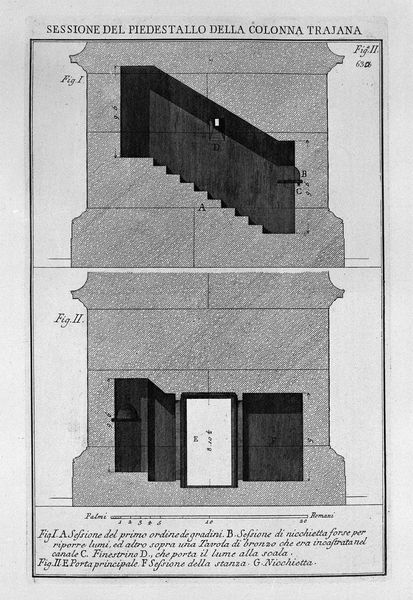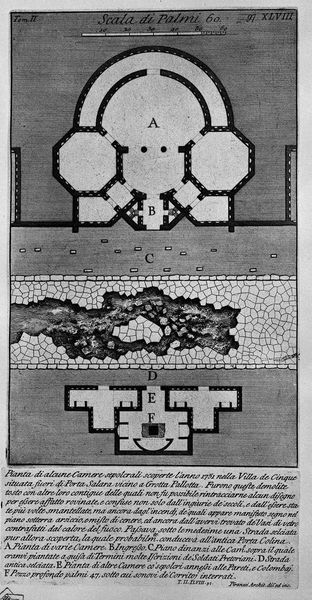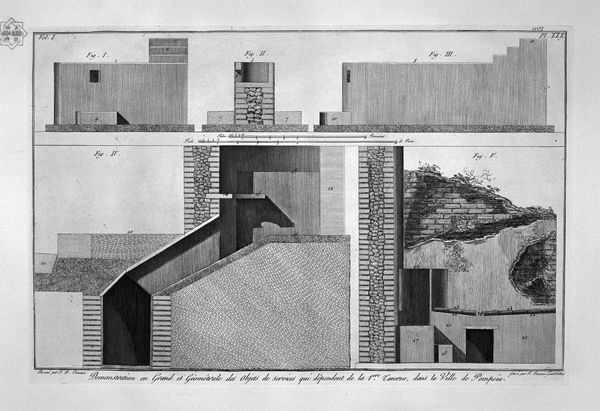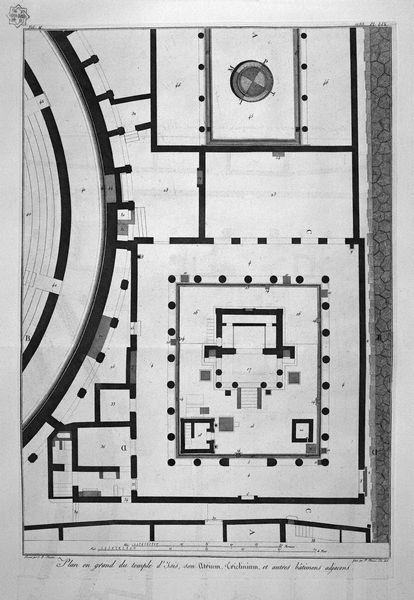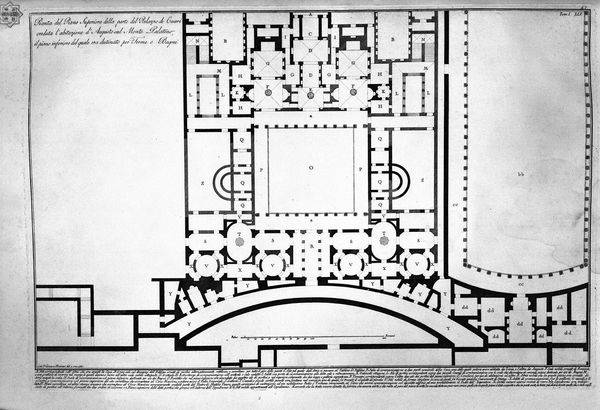
Observations sur les antiquités de la ville d'Herculanum avec quelques reflexions sur la Peinture & la Sculpture des Anciens & une courte description de quelques Antiquités des environs de Naples 1754
0:00
0:00
drawing, print, paper, pencil, engraving, architecture
#
drawing
#
neoclacissism
# print
#
book
#
architectural plan
#
perspective
#
paper
#
pencil
#
architectural drawing
#
architecture drawing
#
engraving
#
architecture
Dimensions: Overall: 6 5/8 x 4 1/8 x 13/16 in. (16.8 x 10.5 x 2 cm)
Copyright: Public Domain
Curator: Immediately striking! There's a certain somberness to the grayscale rendering, and a sense of measured exploration in the layout of the architectural forms, perhaps signaling how antiquity can sometimes appear barren through contemporary eyes? Editor: This engraving from 1754 by Charles Nicolas Cochin II, titled *Observations sur les antiquités de la ville d'Herculanum...*, showcases a cutaway view and plan of an ancient structure. Its current home is right here at the Metropolitan Museum. Curator: I’m drawn to the consistent presence of vessels and urns integrated into both the structural elevation and plan. What can you make of those icons? They stand out amidst all the technical detail. Editor: Considering the social and intellectual climate of the mid-18th century, it is probably more than just simple design. In that era, particularly with the rediscovery of Pompeii and Herculaneum, antiquity became almost a radical challenge to contemporary hierarchies. These archaeological records represented a direct line to civilizations with their own power structures, ideologies, and value systems outside the feudal order. Curator: Exactly, Herculaneum! These images aren't just documentation; they're symbols of rebirth, of artistic authority rooted in history and inspiring Neoclassical visions. And of course, these rediscovered urns carry literal weight—the ashes and memory of a different civilization. Their rediscovery introduced an archetypal iconography for loss. Editor: Yes, the artist is consciously situating viewers within an intersection between the ancient and the emergent, a challenge to inherited notions of class and governance through aesthetics. This imagery was particularly impactful because it served as a form of early reportage, visualizing revolutionary thought through the lens of archaeological rediscovery. It really fueled contemporary cultural dialogue and inspired artistic and intellectual trends. Curator: Looking again, there's a pervasive emptiness in this ancient blueprint, even with all that promise of rebirth and intellectual foment. Yet it holds the potential for meaning and action, once refilled by contemporary interpretation. It speaks volumes about the way we engage with symbols across time, how we fill the vessels of the past with new convictions and values. Editor: Agreed, I will now think twice the next time I encounter similar artwork from the period; a renewed perspective through which one views similar vestiges of a forgotten era is indispensable.
Comments
No comments
Be the first to comment and join the conversation on the ultimate creative platform.
